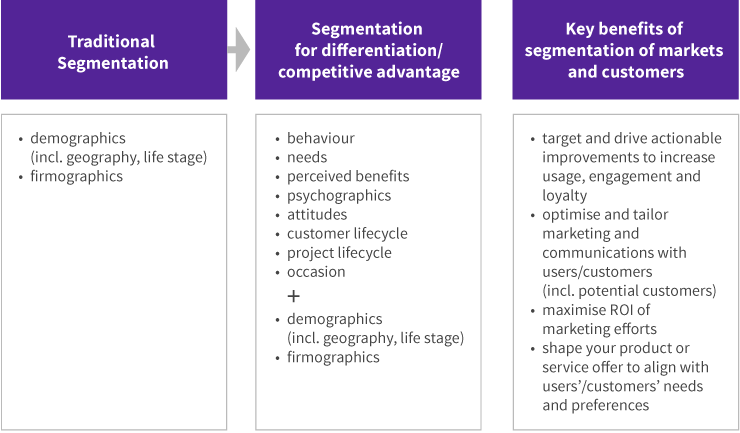Not all users/customers have similar needs and preferences. Segmenting markets and customers can help you make better decisions, be more relevant, and focus your efforts on the segments that will deliver the greatest benefit to your business.
We work with you to develop the most appropriate methodology of segmentation based on your business objectives. Depending on your needs and situation, segments may be based on behaviour, perceived benefits, psychographics, customer lifecycle, project lifecycle, occasions, segment needs, geography, demographics, and/or firmographics. These segments may be either predetermined or developed using advanced techniques.

Segmentation in B2B and Industrial Markets
B2B and industrial markets are more complex in that there are often multiple levels and contacts within a company that impact upon the decision making process. For example:
- Users have different requirements than someone in procurement, whose needs again differ from a CEO’s. In other cases a user of the product (or service) may not even have a role in the decision making.
- Policy, governance, industry standards, etc. will also have a bearing on the decision.
- Specific product/service branding is not as prevalent/differentiated in many B2B and industrial markets.
Traditional B2B and industrial segmentation was all about firmographics, such as customer spend, location, industry/application, and position/role. There is, however, a need for deeper understanding of differences between buyers/users/influencers, to maximise your penetration and return of product (or service) offers, marketing, communications and positioning.
Segmenter®
Segmenter® is TMIC’s proprietary e-reporting tool, which allows you to slice and dice survey results by segmentation variables/groupings and sub-segments. This interactive tool increases engagement by enabling your managers across the business to pull out metrics and insights that are relevant to them.
